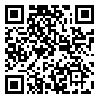2- Department of Basic Sciences and Neuroscience Research Center, Torbat Heydariyeh University of Medical Sciences, Torbat Heydariyeh, Iran ; hasan.azhdari@gmail.com
Background: Musculoskeletal pain is a major clinical problem, but researchers lack viable animal models to study this phenomenon. However, formalin injections are widely used to produce tonic and neurogenic nociceptive responses in rodents. Rodents can present a potential animal model for pain.
Objectives: To develop a muscle pain model with intramuscular injection of formalin in rats.
Materials and Methods: We injected formalin intramuscularly at different concentrations (50 µl; 2%, 4% and 8%) and compared them to its plantar surface subcutaneous injection (50 µl; 2%). Pain responses were scored in the first phase (1-7 minute), interphase (8-14 minute) and the second phases of 2A (15-60 minute) and 2B (61-90 minute).
Results: After intramuscular and subcutaneous formalin injection, rats showed nociceptive behaviors for less than 10 minutes, and then nociceptive behaviors decreased significantly or stopped. Subsequently, the second phase showed ongoing peripheral activity. In the first phase subcutaneous injection was more painful and in second phase intramuscular injection with doses of 2% and 4%. Conclusion: We developed a novel muscle pain model based on tonic nociceptive behaviors in rats; following intramuscular formalin injections. This model has great clinical relevance and can facilitate new studies on pain.
Received: 2016/07/6 | Accepted: 2016/07/6 | Published: 2016/07/6
| Rights and permissions | |
 | This work is licensed under a Creative Commons Attribution-NonCommercial 4.0 International License. |



